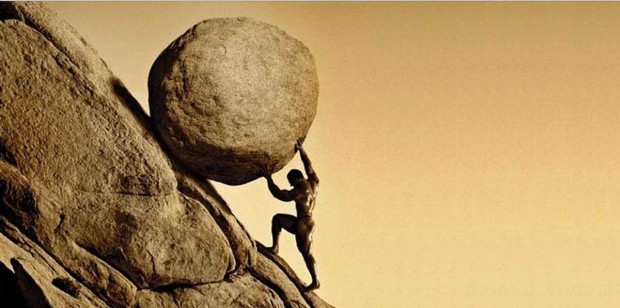In ancient Greek mythology, there lived a king named Sisyphus who was punished by the gods by making him spend an eternity pushing a massive boulder up a hill, only to be forced to watch it roll back down over him when he reached the top. Over and over and over again… forever. Reflecting on the past decade of air show safety, the legend of Sisyphus contains eerie parallels to our industry. As an industry, we have gone to great lengths and committed significant resources toward the goal of pushing the boulder of air show safety. And yet, we still have seasons in which it feels as if that boulder is rolling back down over us, forcing us to start all over again the following year. But is that what is actually occurring?
When considering what the industry has done to improve safety during this time, it adds up to the same metaphorical effort required to push a boulder up a hill several times over: The four revisions — and more importantly, improvements — to the ICAS ACE Manual, implementation of standard incident investigations, development of best practices for myriad subject matters, establishment of a confidential reporting system, creation of the ICAS Air Boss Recognition Program, adoption of Safety Management System (SMS) principles and risk management tenets, and the development of a new tool that will allow ACEs to open aerobatic practice areas with ease, represent just a few of the many advances the industry has made in pushing the safety boulder up the hill. As someone with intimate knowledge of the work that has gone into each of these projects, I can testify that Sisyphus had it easier.
At the end of a year, when we could despair about the effectiveness of the work that we collectively have put into making the air show industry safer, it is especially important not to lose sight of the big picture. The industry has achieved safety successes that have fundamentally altered the paradigm of the past. Specifically, the institution of the ICAS ACE program and practical evaluation standards in the early 1990s immediately and permanently improved the safety of air shows, unlike anything we had ever seen. The accident rate dropped annually by double digits as a direct result of the effort the industry put into improving the evaluations of its performers. While that level of effectiveness is rare, it is indicative of the possibilities that come when we all focus on a particular challenge. Though each project is unlikely to have the same direct and calculable effect as the ACE program, the summation of our work will.
One of my favorite trivia shows was “Who Wants to be a Millionaire?” which featured safe havens that would guarantee a certain level of success regardless of how the contestants fared as they moved up the ladder. In Sisyphean terms, the boulder would never roll back down to the bottom of the hill. That is precisely what we have done regularly during the past 25 years and especially the last ten. Each step the industry has taken represents a safe haven that arrests the fall of the boulder, making the next push up the hill easier than the push before. In the risk management world, these safe havens are called “controls” or “defenses.” As Dr. Reason’s “Swiss Cheese” model illustrates, each project is an additional layer of cheese or the filling of a hole. We have spent the past decade fortifying the defenses that will impact air show safety, and we are now predictively seeking flaws in this system and preemptively fixing them. That alone represents a safe haven that we had not reached just ten years ago.
So, are we really Sisyphus? Are we stuck in the same pattern of pushing a metaphorical boulder up the same hill forever? Absolutely not. Unlike Sisyphus, who was obliged to roll the same boulder up the same hill in perpetuity, every single action that we take to improve and each success that we have diminishes the size of that hill and so reduces the distance the boulder could fall. And that is an important thing to remember as we continue our efforts to make this industry safer and more successful.








